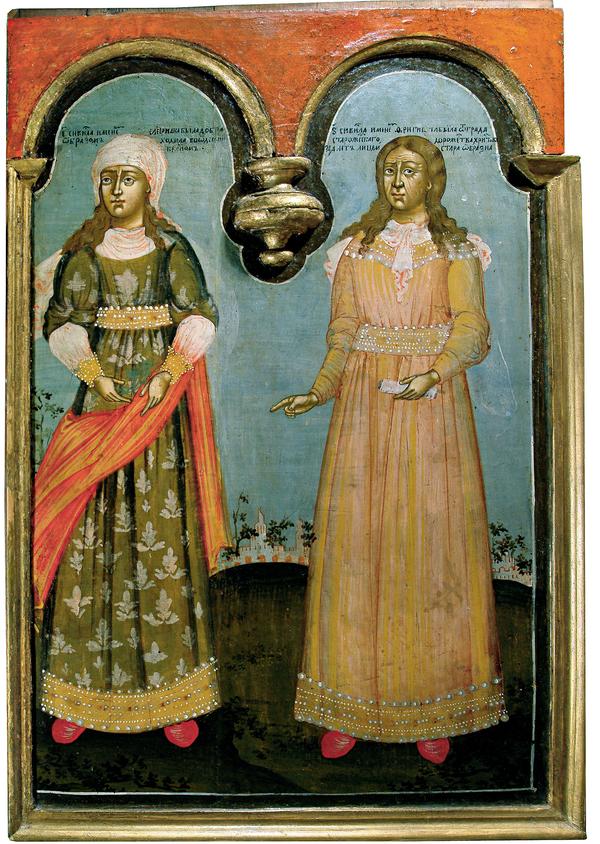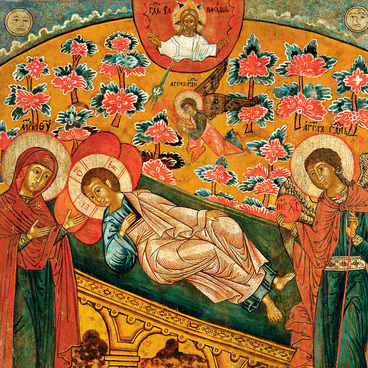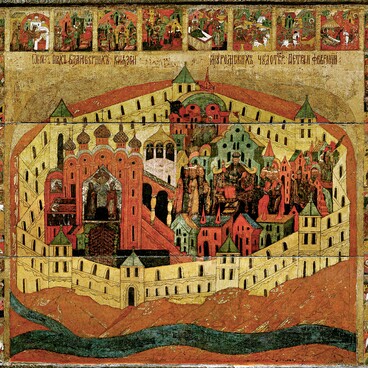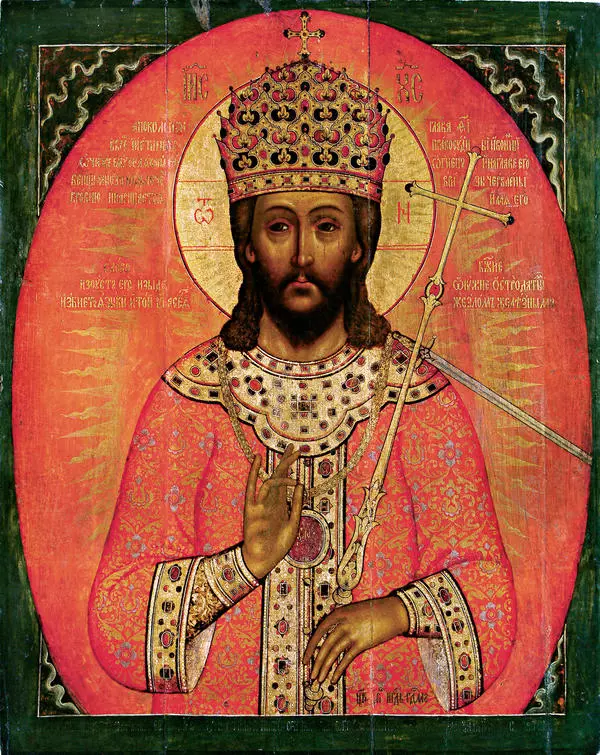The icon representing the Erythraean and Phrygian sibyls was painted by Alexander Kazantsev in 1715. He made the icon for a new church, St. Nicholas-on-the-Embankment, built in Murom in 1700–1717. According to an inscription on the Church, all the icons for it were painted in 1715.
The Sibyl icon was conceived by a Moscow priest, Dimitry Khristoforov. He funded the construction and decoration of the stone Nicholas Church in memory of his father, who had served in the previous, wooden church. The icon finish of the St. Nicholas-on-the-Embankment Church in Murom was performed by the icon painters of the Annunciation Monastery studios. Alexander Kazantsev was the leading painter of the studios. Pictures of sibyls were designed to decorate the choir places in the church. Each of them had three icons.
In Ancient Greek mythology, sibyls were priestesses who ecstatically prophesied the future. Originally, it was a proper name: Sibyl (in Latin, Sibylla) was the name of a prophetess who lived in antiquity. In Christianity, it was traditionally believed that sibyls’ prophesies predicted the advent of the Saviour.
In Russian art, sibyl icons became popular in the 16th and 17th centuries. The role of a literary source for such subjects was played by The Prophesies of Hellenic Sages, a book which had an article about twelve sibyls. The book didn’t have any one author. It consisted of sayings attributed to various sibyls. In the mid-18th century, The Prophesies of Hellenic Sages were included in Cyril’s Book, a collection of anti-heresy writings, and True Faith, a book of orthodoxy articles.
Russia’s earliest pictures of sibyls appeared in the gallery and gate of the Annunciation Cathedral of the Moscow Kremlin: the artist painted a few sibyls disguised in regal clothes with dented-edge crowns on their heads.
Sibyl representations were particularly widespread in the art of the second half of the 17th century and the 18th century when a cycle of pictures established showing 12 prophetesses and ascending to European patterns. They are to be found in miniature pictures within manuscripts discussing sibyls and on silver vessels. Icons representing sibyls are quite rare.
The Sibyl icon was conceived by a Moscow priest, Dimitry Khristoforov. He funded the construction and decoration of the stone Nicholas Church in memory of his father, who had served in the previous, wooden church. The icon finish of the St. Nicholas-on-the-Embankment Church in Murom was performed by the icon painters of the Annunciation Monastery studios. Alexander Kazantsev was the leading painter of the studios. Pictures of sibyls were designed to decorate the choir places in the church. Each of them had three icons.
In Ancient Greek mythology, sibyls were priestesses who ecstatically prophesied the future. Originally, it was a proper name: Sibyl (in Latin, Sibylla) was the name of a prophetess who lived in antiquity. In Christianity, it was traditionally believed that sibyls’ prophesies predicted the advent of the Saviour.
In Russian art, sibyl icons became popular in the 16th and 17th centuries. The role of a literary source for such subjects was played by The Prophesies of Hellenic Sages, a book which had an article about twelve sibyls. The book didn’t have any one author. It consisted of sayings attributed to various sibyls. In the mid-18th century, The Prophesies of Hellenic Sages were included in Cyril’s Book, a collection of anti-heresy writings, and True Faith, a book of orthodoxy articles.
Russia’s earliest pictures of sibyls appeared in the gallery and gate of the Annunciation Cathedral of the Moscow Kremlin: the artist painted a few sibyls disguised in regal clothes with dented-edge crowns on their heads.
Sibyl representations were particularly widespread in the art of the second half of the 17th century and the 18th century when a cycle of pictures established showing 12 prophetesses and ascending to European patterns. They are to be found in miniature pictures within manuscripts discussing sibyls and on silver vessels. Icons representing sibyls are quite rare.





